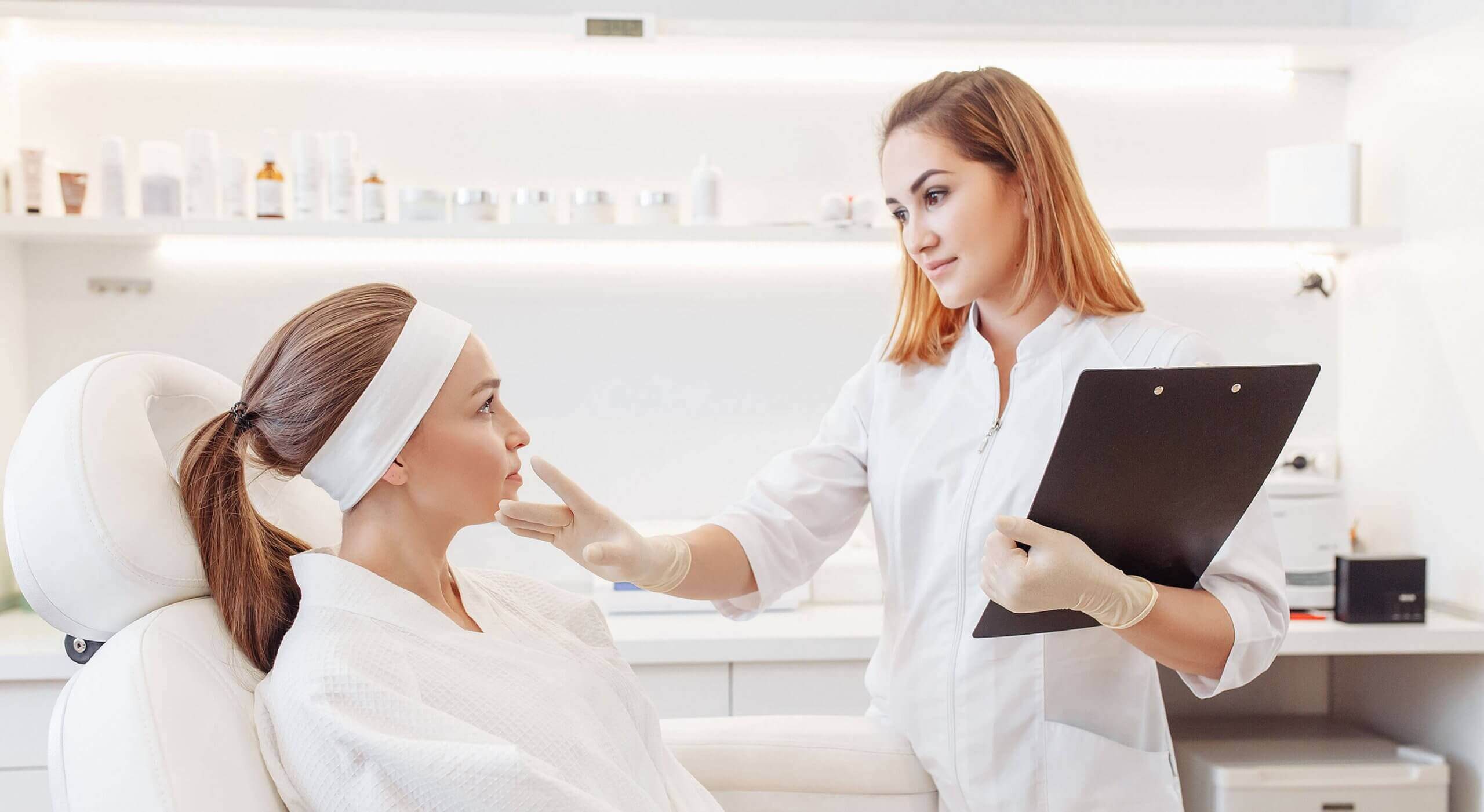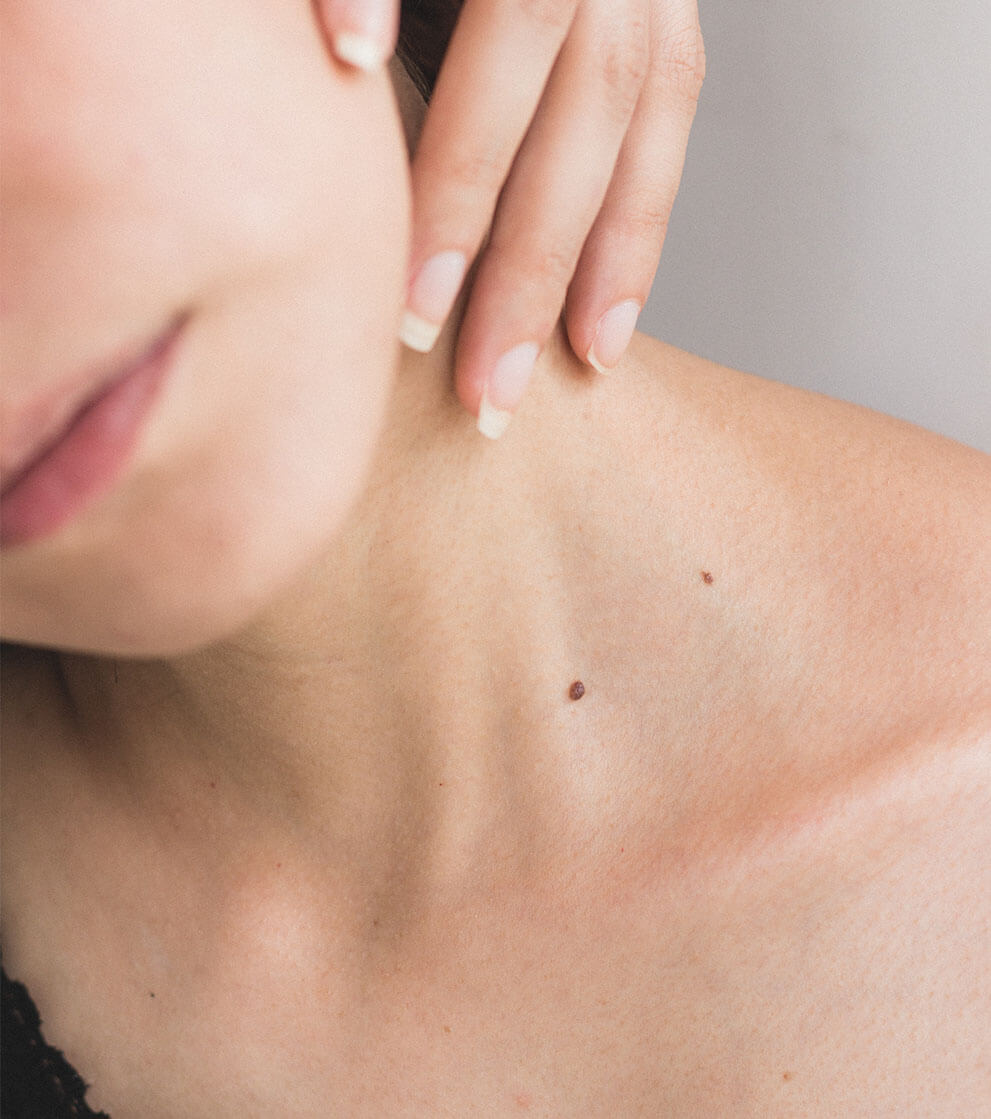Basal Cell Carcinoma (BCC) Treatments
Basal cell carcinoma (BCC) is a type of skin cancer. There are two main types of skin cancer: melanoma and non-melanoma skin cancer. BCC is a non-melanoma skin cancer, and is the most common type (greater than 80%) of all skin cancer (skin cancer incidence is less than 1%) in the UK. BCC are sometimes referred to as ‘rodent ulcers’.
The commonest cause is too much exposure to ultraviolet (UV) light from the sun or from sunbeds. BCC can occur anywhere on your body, but is most common on areas that are often exposed to the sun, i.e. your face, head, neck and ears. It is also possible for a BCC to develop where burns, scars or ulcers have damaged the skin. BCC is not infectious. BCC mainly affects fair-skinned adults, but other skin types are also at risk.
Those with the highest risk of developing basal cell carcinoma are:
- People with pale skin burn easily and rarely tan (generally with light-coloured or red hair, although some may have dark hair but still have fair skin).
- Those who have had a lot of exposure to the sun, such as people with outdoor hobbies or outdoor workers, and people who have lived in sunny climates.
- People who use sun beds or sunbathe.
- People who have previously had basal cell carcinoma.
If you are worried that you might have skin cancer, then please call one of our dermatologists at our clinics on Harley Street, Northwood, or one of our other London Clinics.
Book ConsultationWhat does a basal cell carcinoma look like?
BCC can vary greatly in their appearance, but people often first become aware of them as a scab that bleeds occasionally and does not heal completely. Some BCC are very superficial and look like a scaly red flat mark; others have a pearl-like rim surrounding a central crater. If left for years the latter type can eventually erode the skin causing an ulcer; hence the name “rodent ulcer”. Other BCC are quite lumpy, with one or more shiny nodules crossed by small but easily seen blood vessels. Most BCC are painless, although sometimes can be itchy or bleed if caught on clothes or picked up.

Your Consultation
At the Cedars Dermatology Clinic in Northwood & Harley Street, we draw deeply from the consultation process. Our expert clinicians will listen carefully to understand your skin concerns and aesthetic and medical goals.
- Your medical history is taken into account
- We thoroughly assess your skin
- We listen well to understand your concerns and goals
- We draw up a personalised treatment plan
FAQS about Basal Cell Carcinoma
Apart from a rare familial condition called Gorlin’s syndrome, BCCs are not hereditary. However some of the things that increase the risk of getting one (e.g. a fair skin, a tendency to burn rather than tan, and freckling) do run in families.
Sometimes the diagnosis is clear from its appearance. If further investigation is necessary to confirm the diagnosis then a small area of the abnormal skin (a biopsy) or the entire lesion (an excision biopsy) may be cut out and examined under the microscope. You will be given a local anaesthetic beforehand to numb the skin.
Yes, BCCs can be cured in almost every case, although treatment becomes complicated if they have been neglected for a very long time, or if they are in an awkward place, such as near the eye, nose or ear.
BCCs never spread to other parts of the body except very rarely (fewer than 1 in 20) if neglected for years, when it may spread to draining lymph nodes. Hence, although it is a type of skin cancer it never endangers life.
The commonest treatment for BCC is surgery. Usually, this means cutting away the BCC, along with some clear skin around it, using local anaesthetic to numb the skin. The skin can usually be closed with a few stitches, but sometimes a small skin graft is needed. Please contact our Harley Street, Elstree, Northwood, or other London clinics if you are worried.
Other types of treatment include:
- Difficult or neglected BCC- Mohs micrographic surgery. This involves the excision of the affected skin that is then examined under the microscope straight away to see if all the BCC has been removed. If any residual BCC is left at the edge of the excision further skin is excised from that area and examined under the microscope and this process is continued until all the BCC is removed. The site is then usually covered with a skin graft. This is a time consuming process and only undertaken for certain BCC in difficult anatomical areas if simple surgery is not suitable.
- Radiotherapy- shining X-rays onto the area containing the BCC.
- Very superficial BCC:
- Curettage and cautery- the skin is numbed with local anaesthetic and the BCC is scraped away (curettage) and then the skin surface is sealed by heat (cautery).
- Cryotherapy- freezing the BCC with liquid nitrogen.
- Creams- these can be applied to the skin. The two most commonly used are 5-fluorouracil (5-FU) and imiquimod.
- Photodynamic therapy- a special cream is applied to the BCC which is taken up by the cells that are then destroyed by exposure to a specific wavelength of light. This treatment is only available in certain dermatology departments.
- Surgical excision is the preferred treatment, but the choice of other treatments depends on the site and size of the BCC, the condition of the surrounding skin and number of BCC to be treated (some people have multiple ) as well as the overall state of health of each person to be treated.
Other treatments








